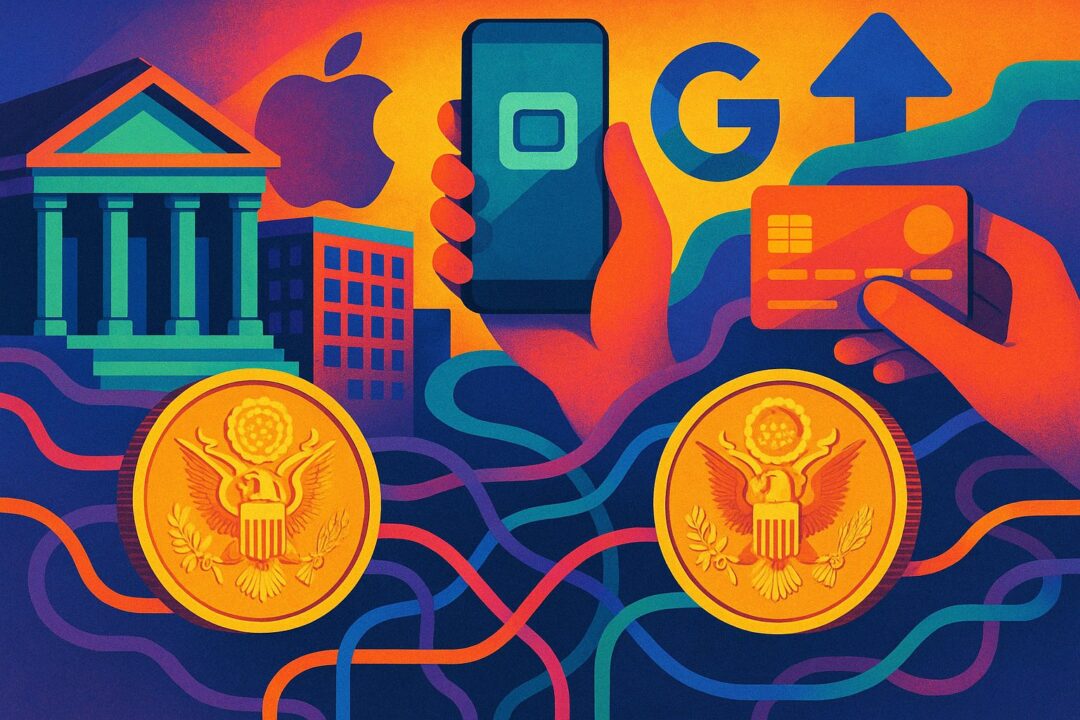Imagine logging onto CoinMarketCap one day and seeing something that feels almost sacrilegious to long-time crypto believers: USDT or USDC sitting at the very top of the rankings, having surpassed Bitcoin in market cap. Not just by a sliver, but significantly, and potentially permanently. The king has been dethroned—not by a new revolutionary protocol or decentralized innovation, but by a centralized, dollar-pegged stablecoin.
It sounds like a headline from a parallel universe. Yet it’s increasingly within the realm of possibility.
Bitcoin has been the crown jewel of crypto since its inception, a symbol of decentralization, digital scarcity, and defiance of the traditional financial system. But as the global demand for on-chain dollars continues to rise and stablecoins scale into the hundreds of billions, the crypto landscape may be on the brink of a profound transformation.
This wouldn’t just be a numerical reshuffle. It could signal a narrative shift—one that redefines what crypto means to the world.
The Numbers Don’t Lie
As of this writing:
- Bitcoin’s market cap is $1.65 trillion.
- USDT is at $145 billion.
- USDC is at $65 billion.
- PAXG, a tokenized gold asset, is at $750 million.
While still trailing Bitcoin, the trajectory is notable. As global demand for tokenized dollars increases, particularly in emerging markets and in the DeFi ecosystem, stablecoins are positioned to absorb trillions in value. After all, the total global demand for dollar liquidity is in the hundreds of trillions. Even the gold market, largely viewed as a stable asset class, has a market cap in the $20 trillion range. There is reason to believe that stablecoins could eventually outscale Bitcoin by orders of magnitude.
But what might happen to the crypto world if that threshold is crossed?
A Psychological Earthquake
Bitcoin has long been seen as the apex predator of the crypto jungle. It was the first, the most decentralized, and the most ideologically pure. If stablecoins were to surpass Bitcoin, it could trigger a psychological crisis within the crypto community.
Bitcoin maximalists, who have long held that BTC is the one true coin, may see this as a betrayal of crypto’s core ethos. To be dethroned by a centralized, fiat-pegged token would be more than a technicality—it would feel like a symbolic loss.
That kind of shift could lead to identity crises, ideological schisms, and new splinters within the blockchain world.
The Optics of Crypto Change
If CoinMarketCap were to show USDT or USDC at the top, it would likely change how the broader public perceives crypto:
- No longer a rebellion against fiat.
- No longer a speculative frontier.
- Now a settlement layer for digital dollars.
This reframing could attract institutions and financially cautious users who previously saw crypto as too volatile. But it might also alienate the ideological purists who were here to escape fiat, not digitize it.
The Regulatory Implications Could Be Massive
If stablecoins became the dominant force in crypto, regulators would likely move quickly:
- Central banks may accelerate their CBDC programs.
- USDT and USDC could face increasing pressure to be transparent, regulated, or even replaced.
- Crypto as a whole might be reclassified from a wild west to a regulated financial rail.
In some ways, this is what governments might prefer: a tokenized dollar they can monitor and influence.
A Shift in Power and Purpose
Bitcoin would likely retain its status as digital gold and a long-term store of value. But its use as a medium of exchange might wane in favor of stablecoins. This bifurcation could solidify:
- Bitcoin as the ideological reserve.
- Stablecoins as the functional currency.
That would represent a significant shift in the structure and power dynamics of the crypto ecosystem.
DeFi, payments, remittances, and NFT marketplaces may evolve to function primarily in stablecoins. This is already underway: many DeFi protocols quote yields in USDC; merchants increasingly accept USDT instead of BTC; and remittance apps are being built with stablecoins at the core.
Yet it’s important to remember: stablecoins don’t inherently require blockchains. They could also be run on centralized databases, managed by traditional finance companies or even big tech platforms. If that path is taken, the role of blockchains could diminish in favor of more familiar, controlled infrastructure.
The Dawn of the On-Chain Dollar Economy?
Stablecoins potentially flipping Bitcoin might mark the maturation of crypto as an economic infrastructure layer:
- Emerging markets plagued by inflation could adopt USDT as a more stable alternative.
- Cross-border business and remittances might happen over tokenized dollars.
- Micropayments and streaming payments could be enabled in digital dollars.
In this scenario, crypto becomes the new PayPal, but better: open, borderless, and programmable—provided it stays on-chain.
This could supercharge adoption, even if it diverges from the original cypherpunk vision.
The Cultural Fallout
If stablecoins come to dominate the charts, the cultural landscape of crypto could shift dramatically:
- Bitcoin maximalism may fade into a niche ideology.
- Ethereum, Solana, and other smart contract platforms might rise as stablecoin-native ecosystems—but only if stablecoins continue using blockchains (which they by no means have to).
- Web3 culture could evolve from one of rebellion to one of utilitarian pragmatism.
Crypto might become less about escaping the system and more about rewiring it from within—or even integrating with it.
Closing Thoughts: Not the End, Just a New Possibility
If stablecoins were to flip Bitcoin in market cap, it could feel like an earthquake. For some, it may seem like a betrayal. For others, a validation.
But it wouldn’t be the end of crypto. It could be the next chapter.
A chapter where blockchains (or perhaps even alternatives) become platforms for real economic activity.
A chapter where digital dollars, not digital gold or Bitcoin, might drive global adoption.
The map could be redrawn. The players may change. And if you look closely, you might see: the game is still just beginning.
Discover more from Brin Wilson...
Subscribe to get the latest posts sent to your email.



